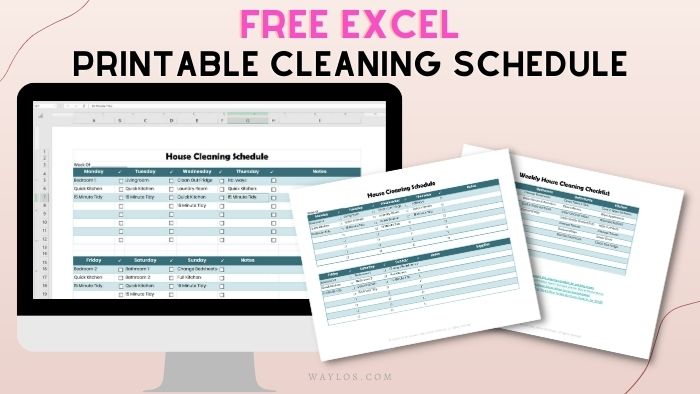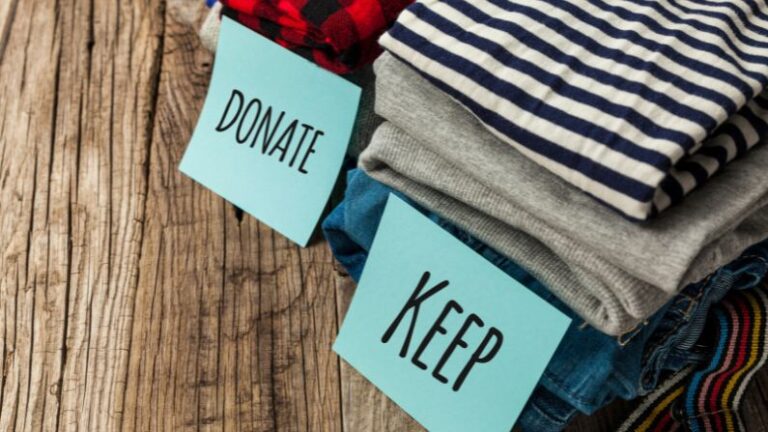Emergency Fund How-To for Broke People
[et_pb_section fb_built=”1″ _builder_version=”3.29.3″][et_pb_row _builder_version=”3.29.3″][et_pb_column type=”4_4″ _builder_version=”3.29.3″][et_pb_text _builder_version=”3.29.3″ text_font=”Georgia||||||||” text_text_color=”#000000″ text_font_size=”20px” text_line_height=”1.6em” ul_font_size=”20px” ul_line_height=”1.7em” ol_font_size=”20px” ol_line_height=”1.7em” header_font=”Georgia||||||||” header_2_font=”Georgia|700|||||||” header_2_text_color=”#cc1c9a” header_2_font_size=”30px” header_2_line_height=”1.7em” header_3_font=”Georgia||||||||”]
Here’s how to get your Emergency Fund set up and saved, even if you’re broke!
[/et_pb_text][/et_pb_column][/et_pb_row][et_pb_row column_structure=”1_3,1_3,1_3″ _builder_version=”3.29.3″][et_pb_column type=”1_3″ _builder_version=”3.29.3″][/et_pb_column][et_pb_column type=”1_3″ _builder_version=”3.29.3″][et_pb_image src=”https://livinglifeasmoms.com/wp-content/uploads/2019/11/Emergency-Fund-How-To-for-Broke-People-1.jpg” _builder_version=”3.29.3″][/et_pb_image][/et_pb_column][et_pb_column type=”1_3″ _builder_version=”3.29.3″][/et_pb_column][/et_pb_row][et_pb_row _builder_version=”3.29.3″][et_pb_column type=”4_4″ _builder_version=”3.29.3″][et_pb_text _builder_version=”3.29.3″ text_font=”Georgia||||||||” text_text_color=”#000000″ text_font_size=”20px” text_line_height=”1.6em” ul_font_size=”20px” ul_line_height=”1.7em” ol_font_size=”20px” ol_line_height=”1.7em” header_font=”Georgia||||||||” header_2_font=”Georgia|700|||||||” header_2_text_color=”#cc1c9a” header_2_font_size=”30px” header_2_line_height=”1.7em” header_3_font=”Georgia||||||||”]
A lot of people don’t even start saving for an emergency because the idea of “3 to 6 months” of their expenses is a ridiculous amount of money.
For people living paycheck to paycheck, it’s 3-6 months of their yearly salary. Nobody can save that much money.
I know that putting any money aside when you are literally broke can seem stupid. But, if you are living paycheck to paycheck (or worse, spending more than you make), even a small-scale emergency could derail your entire financial life.
The truth is, you need a small lifejacket when the rough waters hit. An emergency fund is one of those necessary financial milestones that simply must be done.
*Even if you’re not totally broke, these steps are an excellent start to getting your emergency fund efforts off the ground.*
[/et_pb_text][et_pb_code _builder_version=”3.29.3″][/et_pb_code][/et_pb_column][/et_pb_row][et_pb_row _builder_version=”3.29.3″][et_pb_column type=”4_4″ _builder_version=”3.29.3″][et_pb_text _builder_version=”3.29.3″ text_font=”Georgia||||||||” text_text_color=”#000000″ text_font_size=”20px” text_line_height=”1.6em” ul_font_size=”20px” ul_line_height=”1.7em” ol_font_size=”20px” ol_line_height=”1.7em” header_font=”Georgia||||||||” header_2_font=”Georgia|700|||||||” header_2_text_color=”#cc1c9a” header_2_font_size=”30px” header_2_line_height=”1.7em” header_3_font=”Georgia||||||||”]
Here are 7 Steps to get the ball rolling and get some coin in your Emergency Fund:
- How much should be in my Emergency Fund?
- Why can’t I rely on credit cards?
- List of Emergency Fund Expenses.
- Lowering the Emergency Fund amount: What accounts can I suspend in an emergency?
- What should NOT be included in an Emergency Fund.
- Ways to Find Extra Money to Save.
- Where to Save my Emergency Fund.
Related: Must Read Best Personal Finance Books to for Real Wealth This Year
[/et_pb_text][/et_pb_column][/et_pb_row][et_pb_row _builder_version=”3.29.3″][et_pb_column type=”4_4″ _builder_version=”3.29.3″][et_pb_text _builder_version=”3.29.3″ text_font=”Georgia||||||||” text_text_color=”#000000″ text_font_size=”20px” text_line_height=”1.6em” ul_font_size=”20px” ul_line_height=”1.7em” ol_font_size=”20px” ol_line_height=”1.7em” header_font=”Georgia||||||||” header_2_font=”Georgia|700|||||||” header_2_text_color=”#cc1c9a” header_2_font_size=”30px” header_2_line_height=”1.7em” header_3_font=”Georgia||||||||”]
1. How Much Emergency Fund Should I Have?
In an ideal world, the amount of your emergency fund depends on 3 factors:
- The amounts of your bare-minimum monthly expenses;
- How stable your employment situation is; and
- How much debt you have.
But, we are talking about being broke here. None of the factors above really matter if you can’t rub two nickels together.
What an emergency fund ACTUALLY is, is 3-6 months of your necessary expenses. Not your cable bill, not your restaurant expenses, not your gym membership.
We’ll get into your list of expenses your Emergency Fund can cover in Step 3. However, the amount saved in your Emergency Fund should be no less than $1,000.00. Even if you can get away with paying your rent late, food and electricity are two of your most important expenses. $1,000.00 should be enough to cover necessary food and electricity, for 2 months at minimum.
[/et_pb_text][/et_pb_column][/et_pb_row][et_pb_row _builder_version=”3.29.3″][et_pb_column type=”4_4″ _builder_version=”3.29.3″][et_pb_text _builder_version=”3.29.3″ text_font=”Georgia||||||||” text_text_color=”#000000″ text_font_size=”20px” text_line_height=”1.6em” ul_font_size=”20px” ul_line_height=”1.7em” ol_font_size=”20px” ol_line_height=”1.7em” header_font=”Georgia||||||||” header_2_font=”Georgia|700|||||||” header_2_text_color=”#cc1c9a” header_2_font_size=”30px” header_2_line_height=”1.7em” header_3_font=”Georgia||||||||”]
2. What’s the matter with relying on credit cards as an Emergency Fund?
Here’s what’s the matter…..
Let’s say your “emergency” lasts more than 2 months. You’ll be paying double-digit interest on everything you charge to your credit cards. Even worse, you don’t have the money to pay it off, so you’ll continue paying monthly plus interest until you can catch up again.
Your emergency could end up costing you double than it would have if you had the cash to cover some of it.
[/et_pb_text][/et_pb_column][/et_pb_row][et_pb_row _builder_version=”3.29.3″][et_pb_column type=”4_4″ _builder_version=”3.29.3″][et_pb_text _builder_version=”3.29.3″ text_font=”Georgia||||||||” text_text_color=”#000000″ text_font_size=”20px” text_line_height=”1.6em” ul_font_size=”20px” ul_line_height=”1.7em” ol_font_size=”20px” ol_line_height=”1.7em” header_font=”Georgia||||||||” header_2_font=”Georgia|700|||||||” header_2_text_color=”#cc1c9a” header_2_font_size=”30px” header_2_line_height=”1.7em” header_3_font=”Georgia||||||||”]
3. Emergency Fund Expenses List:
Before we get into a list, the three major items your Emergency Fund needs to cover are your roof, your food and your lights. If you can’t save anything else, shoot for:
- Your rent/mortgage x 3;
- $200 a month for food/necessary toiletries x 3;* and
- Your average monthly electricity bill x 3.
*$200 a month for food is for a family of 1-2, a family of 3 should be $300 per month, family of 4 $400 per month, etc. Little kids eat less, teenagers eat more, this is a general ballpark amount.
Once you have that and are able to keep saving (i.e. no other debts to pay off), here is a list of expenses to save for:
- Food & necessary toiletries
- Electricity
- Rent/Mortgage
- Heat/Gas
- Health Insurance
- Medical out-of-pocket copays for medicine & necessary doctor appointments
- Minimum Monthly credit card payments, if any
- Car payments & insurance
- Necessary transportation expenses – if you can walk to where you need to go, then cab/bus/train expenses don’t go in here
- Necessary Child Care
Once you are in a better situation financially, you can add other expenses to this list knowing that your quality of life won’t be affected in the event of a long-term illness or injury.
[/et_pb_text][/et_pb_column][/et_pb_row][et_pb_row _builder_version=”3.29.3″][et_pb_column type=”4_4″ _builder_version=”3.29.3″][et_pb_text _builder_version=”3.29.3″ text_font=”Georgia||||||||” text_text_color=”#000000″ text_font_size=”20px” text_line_height=”1.6em” ul_font_size=”20px” ul_line_height=”1.7em” ol_font_size=”20px” ol_line_height=”1.7em” header_font=”Georgia||||||||” header_2_font=”Georgia|700|||||||” header_2_text_color=”#cc1c9a” header_2_font_size=”30px” header_2_line_height=”1.7em” header_3_font=”Georgia||||||||”]
4. What accounts can I suspend in an Emergency?
The next thing to ask yourself is this: Can I put a month of cable, internet, subscriptions, gym membership, etc. ON HOLD, and for how long?
What accounts can I cancel without penalty? What accounts can I close for a few months without having to pay a higher rate later?
For any monthly bills you have, call them up NOW, before the actual emergency, and find out if you can either suspend or cancel them for a few months, until you are back in business.
For example, my gym membership can be frozen/suspended without penalty for up to one year. I can re-open the account when I am ready, without having to pay any higher “new member” rates.
Now those expenses can definitely be taken off of your Emergency Fund list. They’ll be ready for you when you get back on your feet.
[/et_pb_text][/et_pb_column][/et_pb_row][et_pb_row column_structure=”1_3,1_3,1_3″ _builder_version=”4.0.6″][et_pb_column type=”1_3″ _builder_version=”4.0.6″][/et_pb_column][et_pb_column type=”1_3″ _builder_version=”4.0.6″][et_pb_image src=”https://livinglifeasmoms.com/wp-content/uploads/2019/11/7-steps-to-get-money-in-your-emergency-fund-1.jpg” _builder_version=”4.0.6″][/et_pb_image][/et_pb_column][et_pb_column type=”1_3″ _builder_version=”4.0.6″][/et_pb_column][/et_pb_row][et_pb_row _builder_version=”3.29.3″][et_pb_column type=”4_4″ _builder_version=”3.29.3″][et_pb_text _builder_version=”3.29.3″ text_font=”Georgia||||||||” text_text_color=”#000000″ text_font_size=”20px” text_line_height=”1.6em” ul_font_size=”20px” ul_line_height=”1.7em” ol_font_size=”20px” ol_line_height=”1.7em” header_font=”Georgia||||||||” header_2_font=”Georgia|700|||||||” header_2_text_color=”#cc1c9a” header_2_font_size=”30px” header_2_line_height=”1.7em” header_3_font=”Georgia||||||||”]
5. What does NOT go on the Emergency Fund List:
You know what doesn’t go on your Emergency Fund list, but here’s a reminder:
- Additional debt repayment
- Additional savings
- Any and all “wants” – haircuts, makeup, housewares, toys, clothing, etc.
- Gifts
- Charity contributions
- Entertainment – including restaurants, movies, alcohol, candy
[/et_pb_text][/et_pb_column][/et_pb_row][et_pb_row _builder_version=”3.29.3″][et_pb_column type=”4_4″ _builder_version=”3.29.3″][et_pb_text _builder_version=”3.29.3″ text_font=”Georgia||||||||” text_text_color=”#000000″ text_font_size=”20px” text_line_height=”1.6em” ul_font_size=”20px” ul_line_height=”1.7em” ol_font_size=”20px” ol_line_height=”1.7em” header_font=”Georgia||||||||” header_2_font=”Georgia|700|||||||” header_2_text_color=”#cc1c9a” header_2_font_size=”30px” header_2_line_height=”1.7em” header_3_font=”Georgia||||||||”]
6. Ways to Find Extra Money to Save
The first thing is to put yourself on an actual budget. Here is the short version:
- Download the Personal Capital free app and get your accounts synced. The app will categorize your spending for you, so you have an excellent idea of where your money is going.
- Open the app and check your expenses for the last 3 months. Make sure they are in the right categories, and write down the totals.
- Take a 3-month average of each category. This is your actual spending.
- Look for categories you can reduce spending in.
- Take 80% of the spending amount you are planning on reducing, and transfer it to your emergency fund account, or get it out of your checking/spending account. If it’s not there you can’t waste it.
The next thing is to take a really good look at your job situation.
- Have you taken on a lot more responsibility since you started, without a corresponding salary increase?
- Do you have some free time on the weekends you can block off for a side job temporarily?
Also, check out my post with some out-of-the-box ways to make some extra money on the side!
[/et_pb_text][/et_pb_column][/et_pb_row][et_pb_row _builder_version=”3.29.3″][et_pb_column type=”4_4″ _builder_version=”3.29.3″][et_pb_text _builder_version=”3.29.3″ text_font=”Georgia||||||||” text_text_color=”#000000″ text_font_size=”20px” text_line_height=”1.6em” ul_font_size=”20px” ul_line_height=”1.7em” ol_font_size=”20px” ol_line_height=”1.7em” header_font=”Georgia||||||||” header_2_font=”Georgia|700|||||||” header_2_text_color=”#cc1c9a” header_2_font_size=”30px” header_2_line_height=”1.7em” header_3_font=”Georgia||||||||”]
7. Where to Save my Emergency Fund:
Graham Stephen did an excellent job explaining the benefits of a high-interest savings account (at the 3:00 mark) as a great option to park your emergency fund. You (hopefully) won’t touch it, it’s immediately able to be used, and the interest earned will help keep up with inflation:
[/et_pb_text][et_pb_code _builder_version=”3.29.3″][/et_pb_code][et_pb_text _builder_version=”3.29.3″ text_font=”Georgia||||||||” text_text_color=”#000000″ text_font_size=”20px” text_line_height=”1.6em” ul_font_size=”20px” ul_line_height=”1.7em” ol_font_size=”20px” ol_line_height=”1.7em” header_font=”Georgia||||||||” header_2_font=”Georgia|700|||||||” header_2_text_color=”#cc1c9a” header_2_font_size=”30px” header_2_line_height=”1.7em” header_3_font=”Georgia||||||||”]
NOTE: Interests rates rise and fall slightly over time. The interest percentage numbers in this video are probably not current, however, these savings accounts are as close to inflation rates as you are probably going to get, especially for accounts with immediate access to your money.
[/et_pb_text][/et_pb_column][/et_pb_row][et_pb_row _builder_version=”3.29.3″][et_pb_column type=”4_4″ _builder_version=”3.29.3″][et_pb_text _builder_version=”3.29.3″ text_font=”Georgia||||||||” text_text_color=”#000000″ text_font_size=”20px” text_line_height=”1.6em” ul_font_size=”20px” ul_line_height=”1.7em” ol_font_size=”20px” ol_line_height=”1.7em” header_font=”Georgia||||||||” header_2_font=”Georgia|700|||||||” header_2_text_color=”#cc1c9a” header_2_font_size=”30px” header_2_line_height=”1.7em” header_3_font=”Georgia||||||||”]
Conclusion:
Start your emergency fund right now! Having some money put away when disaster hits, will mean the difference between a temporary inconvenience and a long-scale financial nightmare. Please make sure to head over to my post Must Read Best Personal Finance Books for Real Wealth This Year, these books are a tremendous help and will get you on the road to financial success.
How close are you to hitting your savings goal this year? Let us know in the comments!
XO,
-Mina
[/et_pb_text][/et_pb_column][/et_pb_row][et_pb_row _builder_version=”3.25″ custom_padding=”27px|0px|0|0px|false|false”][et_pb_column type=”4_4″ _builder_version=”3.25″ custom_padding=”|||” custom_padding__hover=”|||”][et_pb_text _builder_version=”4.4.2″ text_font=”Georgia||||||||” text_text_color=”#000000″ text_font_size=”21px” text_line_height=”1.6em” ul_font=”||||||||” ul_line_height=”1.6em” header_font=”Georgia||||||||” header_2_font=”Georgia||||||||” header_3_font=”Georgia||||||||” hover_enabled=”0″]
P.S.: Checkout my other Blog Posts & be sure to follow me on Pinterest, I have TONS more great content!!
Here are some more posts that might be helpful:
The Ultimate Guide to Set Amazing Financial Goals
Unconventional Ways to Make Extra Money Fast
Free Budget Binder Printables!
[/et_pb_text][/et_pb_column][/et_pb_row][/et_pb_section]



